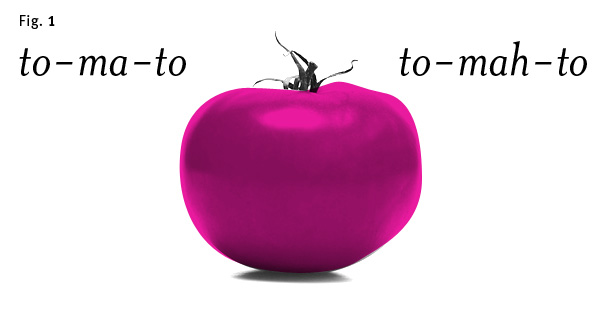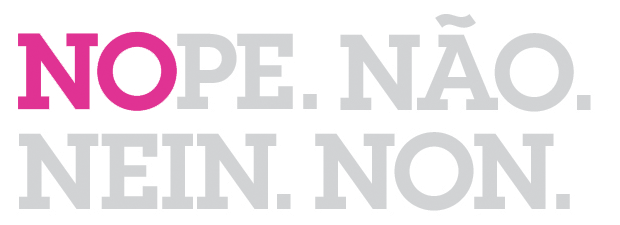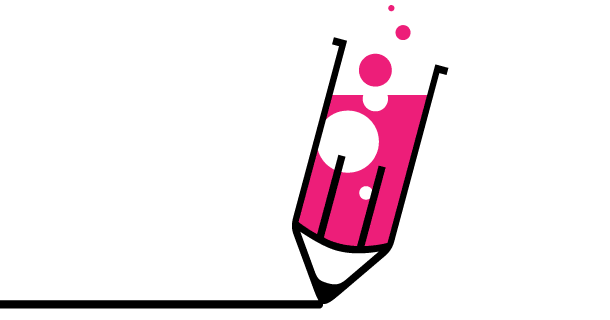Ian Dapot
Parse
HOWDesign.com, 2010-2011
Contributions for Parse, a blog to make big ideas useful, actionable and applicable for design practitioners.

Originally appeared on Parse September 2010
Many designers are determined to avoid the perception of ĺ─˙educatingĺ─¨ their clients, but introducing your clients to some specific vocabulary and learning a little bit of theirs can help make client interactions more productive.
It is probably unreasonable, and a little bit unwise, to expect your clients to become familiar with the nuances of design language. However clients often want to feel like they had some part in creating or managing creative work that reflects on their company and professional reputation. Depending on your clients role within their organization they may not have familiarity in working with designers and might be challenged to understand how you will work together, or how to provide you with meaningful feedback.
The language we use to explain our work often reflects the attributes to which we assign the most importance. Giving your clients a consistent indication of where to focus their attention will help them give more useful comments and keep the project on track. That language is less likely to be specific technical terms and more likely to reflect issues at the principle level of design.
For example words like hierarchy, clarity, emphasis, understanding, and appropriateness all reflect the aim of the work, not the means of execution and all fall with a reasonable expectation for communication between two people from different fields. Leading your clients in a discussion with questions based on those kinds principles, and what if anything they might change about the present arrangement avoids frustrating breaks in communication that become mired in vague or emotional language when an appropriate technical term is missing.
It is also a good idea to try to elicit the same kind of direction from your client as well, and to pay attention to the differences in language they place importance on. For example your clients objectives may have more to do with issues like cost (surprise), reception within their organization, differentiation from competitors or similar products, and how they will manage any assets you create after the project is over, than they do with formal considerations. While you may be particularly interested in exploring typography, color, navigation, animation, or your intuition, explaining your decisions based on your clients preferred vocabulary both keeps your creativity focused on the right explorations and helps your client see that you have their desires in mind.
Quick Tips
Survey says: If you experience an particularly challenging communication gap with a client it may help to put in a little extra effort to normalize their comments. For example you can design a feedback form to specifically address particular issues with the design or project at the principle level. Since surveys are a familiar way of collecting input from customers in non-design settings most people will not think twice about filing one out. Feedback forms also have the added benefit of providing a written record of your clientsĺ─˘ response.
Be inclusive: It may also help to direct some of their energy into exercises that benefit your creative process at the outset. If you conduct visual research for a project, have them help sort the images that you have preselected and introduce them to your vocabulary by explaining why you chose any given example.

Originally appeared on Parse October 2010
Collaboration within creative teams requires enthusiasm, optimism, and an openness to joining others in developing new ideas. A critical step in any collaborative effort is cultivating the appearance of willingness to engage in creative work with others. However, this first step is where many collaborative endeavors break down before they ever really begin.
After working hard to successfully present themselves as good potential partners, many would-be collaborators fear the implications of saying ĺ─˙no.ĺ─¨ How might that response affect the likelihood of future invitations? As a result many deliver a soft or ambiguous ĺ─˙yesĺ─¨ when the best word for collaboration might be just the opposite.
For collaborative teams to work effectively there needs to be clear understanding about the level of participation and responsibilities of each member. Clear communication is the basis of that understanding, and ambiguity on these fronts can affect relationships, deadlines, and outcomes. While it may initially seem like a risky move, in the proper context a definitive ĺ─˙noĺ─¨ may be more conducive to effective collaboration than it first appears. An appropriately delivered ĺ─˙noĺ─¨ sends a clear signal about capacity to engage at a given moment, and can help establish trust between partners to give honest appraisals of the situation at hand.
Senior team members and those with multiple project or administrative commitments may be inclined to vague terms of collaboration. While complex or unpredictable scheduling demands may require a certain degree of flexibility in planning (for example working an unspecified 6 hours a week on a project), that same flexibility may ultimately make them a liability to the success of teams because it doesnĺ─˘t reflect the ebb and flow of othersĺ─˘ productivity. As an alternative it may be more productive for these senior members to commit to engaging the team at specific time and date, or to produce a specific deliverable at a defined moment. In both cases other team members are able to anticipate and prepare for working together to maximize team productivity.
Even designers with fewer commitments may be prone to answering invitations with a different type of ĺ─˙soft yesĺ─¨ for a different set of reasons. In environments where willingness carries social currency designers looking to make a positive impression may be inclined to accept a request they donĺ─˘t have the ability accommodate. Enthusiasm or desire to elevate standing within the workplace can encourage commitment to responsibilities they donĺ─˘t fully understand and actually jeopardize their standing as a result. In such cases itĺ─˘s helpful to consider whether the learning curve for these members can be accommodated within the project timeframe, or if other team members have complementary skills to provide support and ensure success if needed.
Of course the working conditions and existing relationships between collaborators will have an impact on the the success of the engagement and the need for clear terms of collaboration. Open or less structured environments, and new working relationships have a greater need for defined terms of participation and explicit agreements. In structured or hierarchical environments, with more defined roles and relationships, the need is greater for collaborative invitationsĺ─ţespecially those from senior membersĺ─ţto be positioned as ĺ─˙opt inĺ─¨ and not a as a benchmark for opportunities in the future.
Quick Tips
1. Craft invitations ahead of time, make requests and invitations as explicit as possible, rather than asking whether someone would like to ĺ─˙work togetherĺ─¨ or ĺ─˙help on a projectĺ─¨ ask for ĺ─˙help with finishing ĺ─˙xĺ─¨, by ĺ─˙y dateĺ─¨.
2. Looking to make a good impression but stretched for time? Say ĺ─˙no, thanksĺ─¨ and provide an alternative, suggest a colleague who may have more availability or is better suited to the job and develop a reputation as a knowledgeable resource and team player in another way.
3. Fielding lots of requests for participation? Offer low volume participation in higher definition and stick to your agreements, or say, ĺ─˙no, Iĺ─˘m sorry I have other commitmentsĺ─¨ as early as you can and give teams time to find or create other solutions.
Dig Deeper!
1. The Corporate Executive Board writes about the Technology-Collaboration Disconnect and behavioral/social factors at Bloomberg Businessweek.
2. Evan Rosen at BusinessWeek says collaboration needs more than technology.

Originally appeared on Parse February 2011
Taking risks and experimenting are essential parts of a vibrant design practice and are important behaviors to nurture in creative cultures. Recognizing the difference in the definitions between risk taking and experimentation is equally critical in determining how to identify opportunities, evaluate outcomes, plan next steps, and stay out of trouble.
Risks involve an element of the unknown, and can turn out well or badly depending on the specific context. The results of risk taking are often unrepeatable, because it isnĺ─˘t clear what decision or changes in circumstance lead to success or failure. An experiment involves changing a controlled number of elements to test a hypothesis, you know what youĺ─˘re changing and what you hope to accomplish by doing so. Ideally you prove your hypothesis, but disproving it is equally valuable in terms of knowledge and understanding because you should be able to identify the variable that changed and have a sense of what happened as a result. Despite the challenges that risks represent in determining why they pay off and why they fail, they play an important part in creative growth and development, and itĺ─˘s a basic assumption that relevant design should involve experimentation.
There is no shortage of situations that can benefit from changing behaviors, including seeking new and different work, reviving a struggling project, or collaborating with new team members. The challenge of experimenting as a designer is in finding ways to use the propensity for taking chances natural to designers to the advantage of projects and our clients. So how should we evaluate the right time for risks and experiments and set ourselves up for success?
Set expectations with collaborators about whether individual projects or specific decisions represent a risk or an experiment, create agreement about which activity youĺ─˘re engaging in and set realistic expectations about unknowns. Transparency about the awareness of risk and your intentions can help build confidence in your direction and give clients the chance to provide feedback before launching into new space (hopefully a solid ĺ─˙go for itĺ─¨).
If youĺ─˘re considering designs for alternatives to something familiar or trying to create something new to the world, it might help to frame risks and experiments as questions, ĺ─˙what would happen ifĺ─Âĺ─¨ and allow your collaborators to add their expertise and experience to the decision. They may be able to share relevant details from past work that answer some of the unknowns, and point to examples or experts that might help. If youĺ─˘re designing within a more determined set of boundaries try presenting formal risks as tactical options among a portfolio that reflect your grasp of the project brief, and cast the more adventuresome directions as an effort to push understood boundaries.
Keep in mind the phrase ĺ─˙managing riskĺ─¨ has at least two possible interpretations, first that risk is something to be avoided and ĺ─˙managedĺ─¨ away, second that risk taking and experimentation is something to be nurtured and managed to itĺ─˘s best effect.
Dig Deeper!
1. 1. Read this Q&A with Amy C. Edmondson on the trade offs between learning and performance for Harvard Business Schoolĺ─˘s Working Knowledge.
2. Marcia Conner writes on the steps to ĺ─˙Create a Learning Cultureĺ─¨ for Fast Company.